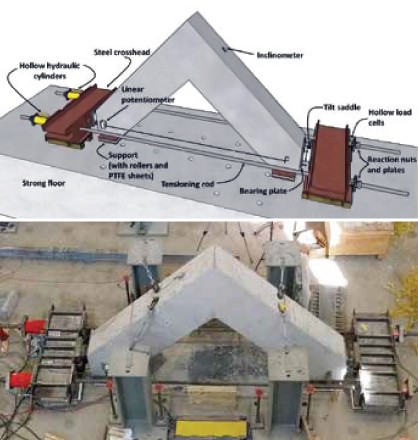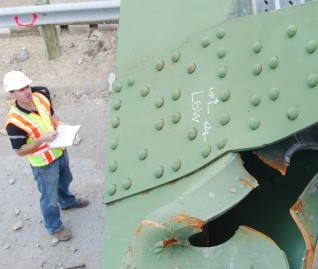
Load tests were conducted on knee joint specimens subjected to closing moments to evaluate the impact of transverse reinforcement in the joint region as well as longitudinal reinforcement details on the performance of the joints. Focus was placed on the requirement for curved-bar nodes in the strut-and-tie method provisions of ACI 318-19 related to the bend radius of the longitudinal bars. Four specimens were designed to represent closing knee joints with practical details.
In this article, Senior Principal Gary Klein, Hwa-Ching Wang (The University of Texas at Austin), and Christopher Williams (Purdue University) share how their results indicate that the radius of the bar bend at the curved-bar node is critical to the joint performance, regardless of the presence of transverse reinforcement in the joint.
This article was originally published in Concrete International, the official publication of the American Concrete Institute.
RELATED INFORMATION
-
 Gary J. Klein, Vice President and Senior PrincipalWJE Northbrook MORE >People | Gary J. Klein, Vice President and Senior Principal
Gary J. Klein, Vice President and Senior PrincipalWJE Northbrook MORE >People | Gary J. Klein, Vice President and Senior Principal -
 Whether investigating a specific project challenge or collaborating with government agencies on... MORE >Services | Research
Whether investigating a specific project challenge or collaborating with government agencies on... MORE >Services | Research -
 When the integrity or condition of a structure is in question, clients rely on us for answers MORE >Services | Structural Engineering
When the integrity or condition of a structure is in question, clients rely on us for answers MORE >Services | Structural Engineering -
 Owners and contractors rely on our specialized construction knowledge to properly detail and... MORE >Services | Construction Engineering
Owners and contractors rely on our specialized construction knowledge to properly detail and... MORE >Services | Construction Engineering



































